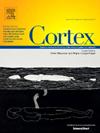Did H.M. exhibit accelerated long-term forgetting? Measuring forgetting in amnesia
IF 3.2
2区 心理学
Q1 BEHAVIORAL SCIENCES
引用次数: 0
Abstract
The early investigations of patient H.M. inaugurated the modern era of memory research. During the 1970s and 1980s, a key debate over whether H.M. with bilateral medial temporal lobe lesions exhibited accelerated long-term forgetting attracted an increasing interest in forgetting research among amnestic patients. Huppert and Piercy (1979) examined H.M.’s performance in visual recognition at 10-minute, 1-day, and 7-day intervals and suggested that H.M. was subjected to rapid forgetting compared with Korsakoff patients and healthy participants reported in Huppert and Piercy (1978). In contrast, Freed et al. (1987) employed the same experimental paradigm and concluded that forgetting rates in H.M. did not differ from those in healthy controls. These incompatible findings highlighted a methodological challenge in measuring forgetting in the cross-group comparison design, where closely equalising the initial performance between patient and control groups is usually suggested. The re-analysis in this viewpoint, using both linear- and nonlinear-based modelling, reconciled the discrepancy between the aforementioned studies. Our results indicated that the rate of forgetting in H.M. did not differ from that in healthy controls, regardless of whether the initial performance was closely matched. Here, we suggest that the cross-group comparisons in forgetting studies do not necessarily seek a perfect match in initial performance unless the risks of confounding encoding and retrieval processes can be effectively controlled.
H.M. 是否表现出加速的长期遗忘?测量遗忘症患者的遗忘
对患者H.M.的早期研究开创了现代记忆研究的先河。20 世纪 70 年代和 80 年代,关于双侧内侧颞叶病变的 H.M. 是否表现出加速的长期遗忘的争论引起了人们对失忆症患者遗忘研究的兴趣。Huppert 和 Piercy(1979 年)研究了 H.M.在 10 分钟、1 天和 7 天时间间隔内的视觉识别表现,认为与 Huppert 和 Piercy(1978 年)报告的 Korsakoff 患者和健康参与者相比,H.M.的遗忘速度更快。与此相反,Freed 等人(1987 年)采用了相同的实验范式,并得出结论认为,H.M.患者的遗忘率与健康对照组的遗忘率没有差异。这些互不相容的研究结果凸显了在跨组比较设计中测量遗忘的方法学挑战,在这种设计中,通常建议患者组和对照组之间的初始表现密切相等。本研究采用线性和非线性建模方法重新分析了上述研究之间的差异。我们的结果表明,无论初始成绩是否完全匹配,H.M.患者的遗忘率与健康对照组的遗忘率并无差异。在此,我们建议,遗忘研究中的跨组比较不一定要寻求初始表现的完全匹配,除非编码和检索过程的混淆风险能得到有效控制。
本文章由计算机程序翻译,如有差异,请以英文原文为准。
求助全文
约1分钟内获得全文
求助全文
来源期刊

Cortex
医学-行为科学
CiteScore
7.00
自引率
5.60%
发文量
250
审稿时长
74 days
期刊介绍:
CORTEX is an international journal devoted to the study of cognition and of the relationship between the nervous system and mental processes, particularly as these are reflected in the behaviour of patients with acquired brain lesions, normal volunteers, children with typical and atypical development, and in the activation of brain regions and systems as recorded by functional neuroimaging techniques. It was founded in 1964 by Ennio De Renzi.
 求助内容:
求助内容: 应助结果提醒方式:
应助结果提醒方式:


